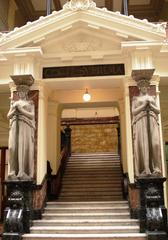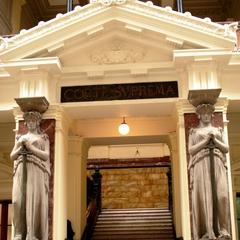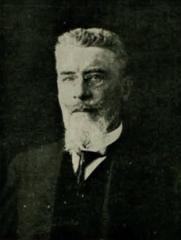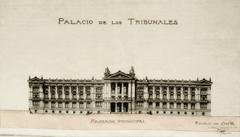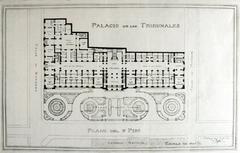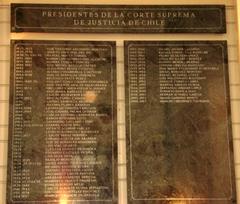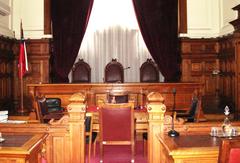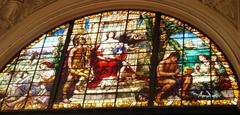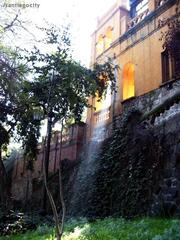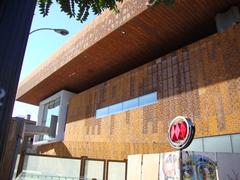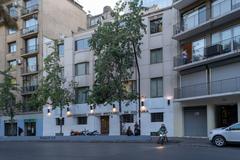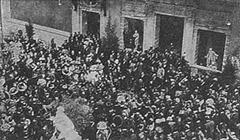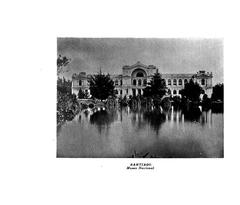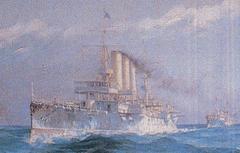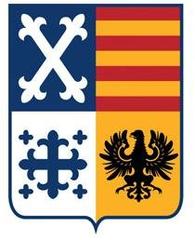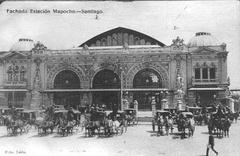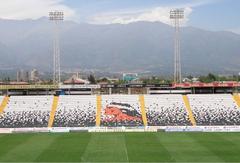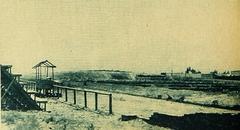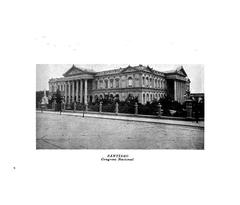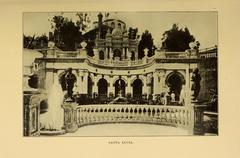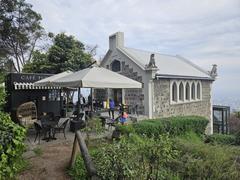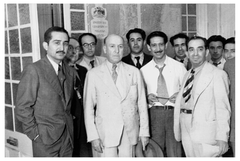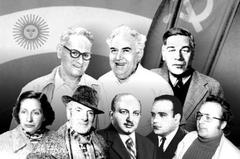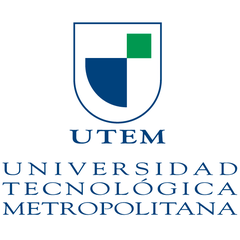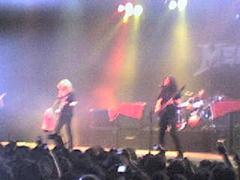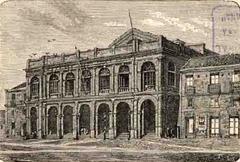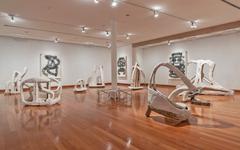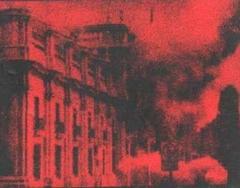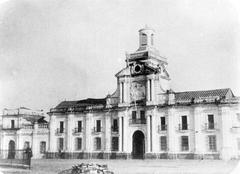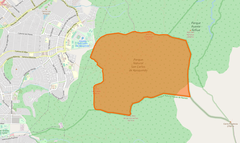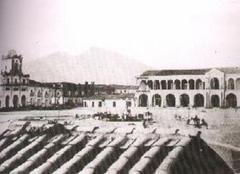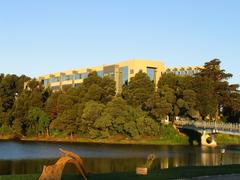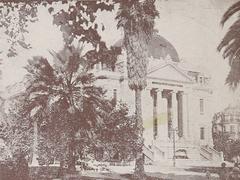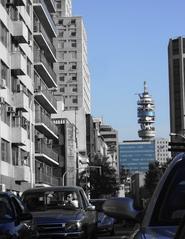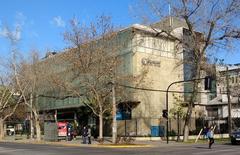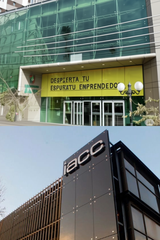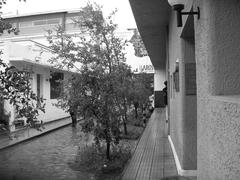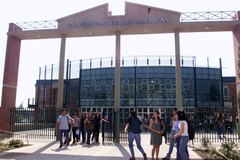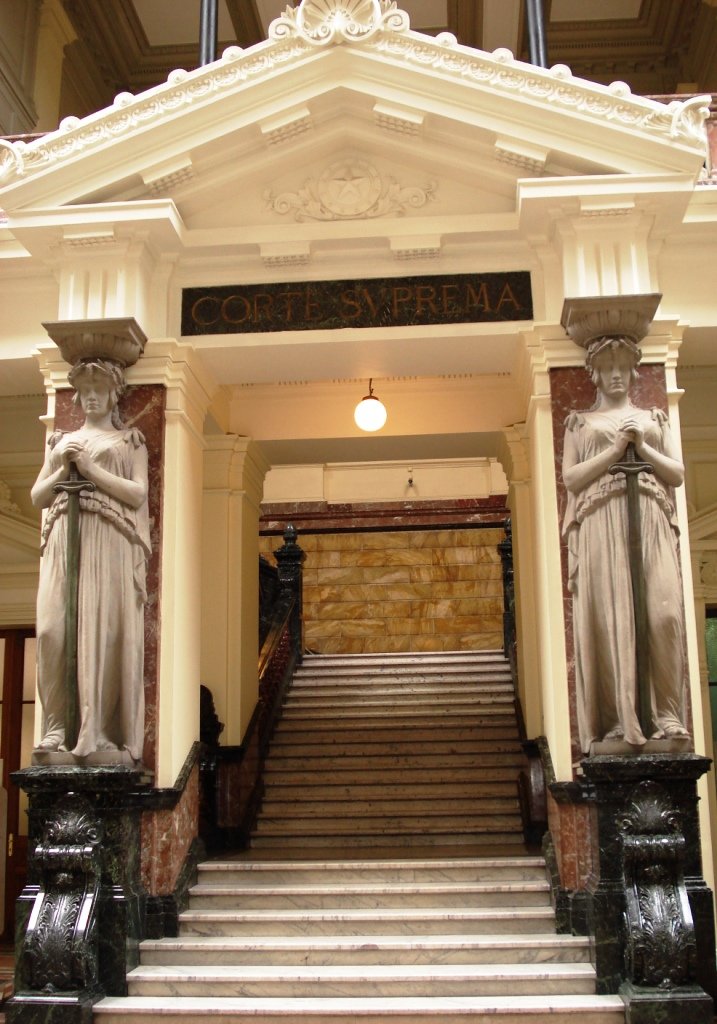
Palacio de los Tribunales de Justicia de Santiago: Visiting Hours, Tickets, and Guide
Date: 14/06/2025
Introduction
The Palacio de los Tribunales de Justicia de Santiago is one of Chile’s most iconic landmarks, representing both the architectural grandeur and the historical evolution of the country’s judicial system. Serving as the seat of the Supreme Court and the heart of judicial administration, this neoclassical palace not only underlines Chile’s commitment to justice and democracy but also offers a window into the nation’s legal and cultural heritage. Designed by French-Chilean architect Emilio Doyère and completed in 1930, the palace’s impressive façade on Alameda Bernardo O’Higgins and its exquisite interiors—most notably the stained-glass dome and the “Vitral de la Justicia”—make it a must-visit for history buffs, architecture enthusiasts, and curious travelers alike (Poder Judicial de Chile; Monumentos Nacionales de Chile; Santiago Turismo).
Declared a National Monument in 1976, the Palacio is not only historically significant but also central to Santiago’s vibrant historic district. This guide provides comprehensive, up-to-date information on visiting hours, guided tours, accessibility, ticketing, and practical tips to help you make the most of your visit to this emblematic building (SantiagoChile.com; Conociendo Chile).
Table of Contents
- Introduction
- Historical Overview and National Monument Status
- Visiting the Palacio de los Tribunales
- Architecture, Art, and Cultural Significance
- Practical Visitor Information
- Frequently Asked Questions (FAQ)
- Conclusion and Final Tips
- References
Historical Overview and National Monument Status
Origins and Early Planning
The idea of creating a central judicial palace for Santiago arose in the late 19th century to bring together Chile’s main courts and legal institutions, previously spread across various buildings. This initiative was a milestone in unifying and modernizing the country’s justice system (Poder Judicial de Chile).
Architectural Design and Artistic Features
Emilio Doyère’s neoclassical design, executed between 1905 and 1930, features grand Corinthian columns, a stately symmetrical façade, and abundant use of Chilean stone and marble. The central atrium is illuminated by a stained-glass dome crafted by French artisans, depicting allegories of justice and wisdom. Inside, you’ll find marble staircases, intricate ironwork, and the celebrated “Vitral de la Justicia,” created by Gabriel Argy-Rousseau (Monumentos Nacionales de Chile; SantiagoChile.com).
Role in Chilean History
Since its inauguration, the Palacio has played a pivotal role in Chile’s legal and political life. It witnessed key court rulings, constitutional reforms, and was a focal point during the military dictatorship (1973–1990). Today, it stands as a living symbol of rule of law and democracy (Poder Judicial de Chile).
National Monument Status
In 1976, the building was declared a National Monument, which ensures its preservation and protection. Restoration projects have maintained the integrity of its façade, stained glass, and interiors (Monumentos Nacionales de Chile).
Visiting the Palacio de los Tribunales
Visiting Hours and Tickets
- Hours: Open to the public Monday to Friday, 9:00 AM – 5:00 PM. Closed weekends and public holidays.
- Admission: Entry is free of charge. Check the official website for any updates or special exhibitions which may alter access.
Guided Tours and Events
- Guided Tours: Available by prior arrangement and during special events such as Heritage Day (Día del Patrimonio Cultural). Tours offer insights into the palace’s architecture, history, and judiciary role; advance booking is advised (Conociendo Chile).
- Special Events: The Palacio frequently hosts cultural exhibitions, educational programs, and official ceremonies—especially during national commemorations.
Accessibility
The palace is wheelchair accessible, offering ramps and elevators. The adjacent Montt Varas Square is also designed for universal access (Stgo Patrimonio Accesible).
Photography and Etiquette
- Photography: Allowed in most public areas (no flash or tripods). Interior photography may be restricted, especially during court sessions—ask staff for guidance.
- Etiquette: As a functioning court, visitors should dress appropriately and maintain silence in official chambers.
Architecture, Art, and Cultural Significance
Architectural Style and Interior Highlights
The Palacio is a prime example of early 20th-century neoclassical architecture, with French influences evident in its monumental columns, grand pediments, and triple-height central hall. Notable features include:
- The stained-glass dome in the central atrium, crafted in Munich by Mayer & Co., illuminating allegories of the Republic, Justice, Commerce, and Mining.
- The grand staircase, adorned with caryatids sculpted by Antonio Coll y Pi, symbolizing virtues such as justice and truth.
- Murals in the Supreme Court chamber depicting pivotal moments in Chilean legal history (Santiago Turismo).
Symbolism in Art and Design
The palace’s neoclassical style embodies ideals of justice, democracy, and republicanism. Artworks, sculptures, and classical motifs—like scales of justice and laurel wreaths—reinforce its civic significance.
Practical Visitor Information
Location and Getting There
- Address: Compañía de Jesús 1140, Santiago Centro.
- Public Transport: Easily accessible via Metro stations Universidad de Chile (Line 1) and Plaza de Armas (Line 5). Multiple bus lines also serve the area.
- Parking: Limited and expensive; public transportation is recommended.
Travel Tips and Safety
- Best Time to Visit: Weekday mornings to avoid crowds; special events provide rare access to restricted areas.
- Safety: The area is generally safe, but visitors should be aware of pickpockets in busy spots like Plaza de Armas.
- Language: Most signage is in Spanish; English is spoken during special tours.
Nearby Attractions
- Plaza de Armas: Santiago’s historic core with the Metropolitan Cathedral, Central Post Office, and National History Museum.
- Museo Chileno de Arte Precolombino: Renowned for pre-Columbian artifacts.
- La Moneda Palace: The presidential palace, offering free guided tours.
- Mercado Central: A popular spot for Chilean cuisine.
- Museo Nacional de Bellas Artes: Located in Parque Forestal, ideal for art lovers.
Visitor Facilities and Accessibility
- Amenities: No cafés or gift shops inside; plenty of dining options nearby.
- Accessibility: Ramps, elevators, and accessible public spaces are available. Some historic features may be less accessible, but staff can assist during guided tours.
Frequently Asked Questions (FAQ)
Q: What are the Palacio de los Tribunales de Justicia de Santiago visiting hours?
A: Monday to Friday, 9:00 AM to 5:00 PM; closed weekends and public holidays.
Q: Is there an entrance fee?
A: No, admission is free. Guided tours may require advance booking.
Q: Are guided tours available?
A: Yes, by prior arrangement or during special events like Heritage Day.
Q: Is the building accessible for people with disabilities?
A: Yes, the palace and adjacent areas offer accessible features.
Q: Can I take photos inside the Palacio?
A: Photography is allowed in most public areas, but restrictions may apply in courtrooms.
Q: What other historical sites are nearby?
A: Plaza de Armas, Museo Chileno de Arte Precolombino, La Moneda Palace, and more.
Conclusion and Final Tips
The Palacio de los Tribunales de Justicia de Santiago is an essential stop for anyone interested in Chile’s history, architecture, or legal traditions. Its central location, free admission, and proximity to other cultural landmarks make it an excellent starting point for exploring downtown Santiago. Plan your visit on a weekday, book a guided tour for deeper insights, and enjoy the vibrant historic district that surrounds this monumental palace.
For up-to-date information on visiting hours, guided tours, and special events, refer to the official resources listed below. Enhance your experience with digital tools like the Audiala app for personalized tours and interactive maps.
References
- Poder Judicial de Chile
- Monumentos Nacionales de Chile
- Santiago Turismo
- SantiagoChile.com
- Conociendo Chile
- Stgo Patrimonio Accesible
- DestGuides
- Komoot
